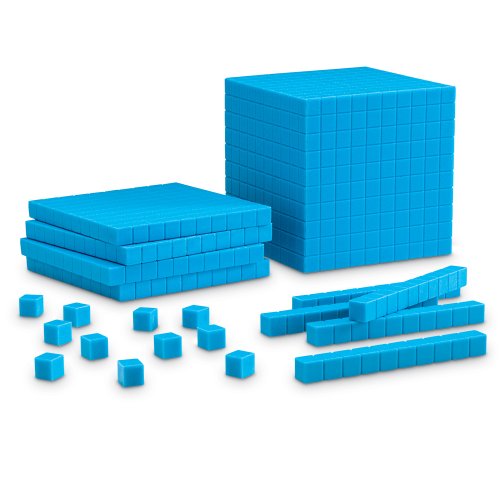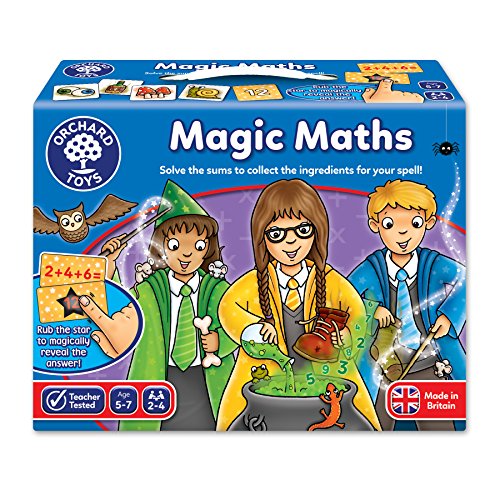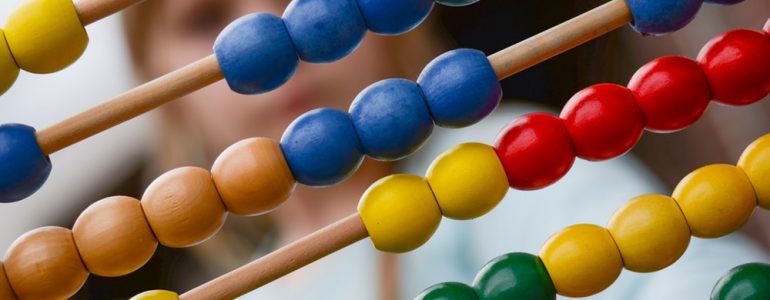With STEM subjects being considered more and more crucial in the modern world, it’s a good idea to give your child a head start on these important areas of knowledge. The best approach is one that combines plenty of fun with learning.
So what better way to teach various concepts of science, technology, engineering and mathematics than with educational toys?
Today we are going to focus on math toys.
While your kid may naturally enjoy learning about things like computers and astronomy, most children grow up with the misconception that core mathematics is hard and boring.
It’s obviously not true.
The best way to get them interested in the subject while also making sure they are learning a thing or two is by using math toys. Here are the best that we found.
1. Numicon: Box of 80 Numicon Shapes

There is a wide variety of Numicon math toys for different ages and learning levels.
This one is quite versatile. You can use it from pre-school level when your child is just starting out on the basics of numbers and counting all through primary school.
For younger children between 3 and 5 years, you can use the shapes just as you would any toy. Let them simply play with them. Over time they will start to associate different numbers with different shapes.
As they grow and learn more about addition and subtraction, the shapes will help them understand these concepts better. They can also use them to learn about multiplication and symmetry.
The box contains 80 shapes with either 5 or 10 shapes for each number from 1 to 10. They are small enough for little fingers but durable enough to last for years.
What I like about it – I love how easy they are to use and the wide versatility they provide to kids of all ages.
2. Learning Resources Grooved Plastic Base Ten Starter Set

For kids, the best way to learn math concepts is by visualization. One area where this really helps is grasping base 10 concepts of ones, tens, hundreds, thousands and so on.
This starter set goes up to thousands. It comes with 100 units (small cubes) to represent ones, 30 rods to represent tens, 10 flats for the hundreds and one cube for the thousands.
For younger kids you can start with simple additions of similar units. E.g. 1 rod + 1 rod = 20
Then you can move on to creating numbers by stacking together different units. E.g. 2 flats + 20 units = 220.
The set is made from hard plastic with smooth edges. You can be sure it will last a long time.
What I like about it – I love how versatile this set is. It’s good enough for basic numeracy but can also teach more complicated concepts such as making 4-digit numbers. It also comes with an activity book to guide parents and kids through the different exercises they can try with the set.
3. I learn 18000 Maths Educational Toys
The best educational toys are those that grow with your child. That’s exactly what this set by I Learn does.
It starts off with simple counting and ends with multiplication.
There are 6 levels of learning with each level having its own activity card. You use the cards together with the number blocks to do activities.
For example, in one card kids have to count the number of objects in the picture and place the number block representing the correct answer on the card. The card has grooves that correspond to specific blocks. So kids will know when they are right and when they need to try again.
When they are done with that the next card presents a slightly more difficult challenge such as filling in a missing number.
What I like about it – Everything comes packaged in a compact briefcase. The briefcase also acts as the playing surface. So you can take the game with you on road trips, sleepovers and anywhere else you go.
4. Orchard Toys Magic Maths Game

Not all educational toys have the same level of fun. It’s important to mix those that lean more towards serious learning with those that max out on the fun factor. This game is the latter.
It’s seriously fun for kids.
It combines simple addition, subtraction and multiplication with a hunt for the right ingredients to a magic spell.
The ingredients are disgusting in a fun way. They include rotten apples, maggots, bogies and brains. Your kids will love them.
They can reveal the answer to a puzzle by rubbing the back of the heat-sensitive cards.
The game is designed for 5 to 7 year olds and is best played with 2-4 players.
What I like about it – I love the fact that it doesn’t just teach maths but also enhances observational skills and encourages critical thinking while also throwing in a huge dose of fun.
5. Melissa & Doug Wooden Abacus
An abacus is a must-buy when you are choosing math toys for kids. It’s especially helpful for younger learners from 3 years going up.
This one by Melissa & Doug is designed to be fun, colourful and durable. It uses multi-coloured wooden beads and thick coated wires that won’t snap or bend.
What I like about it – It’s ideal for teaching basic number recognition as well as simple addition and subtraction. It can also help improve fine motor skills and eye-hand coordination.
How we chose the best math toys for kids
We looked for toys that are both fun and educational. If kids can’t have fun with them then they won’t learn as effectively.
All our picks are toys that teach important concepts without diluting the fun aspect.
Another factor we considered is durability. You don’t want to buy toys that will crack or bend after just a couple of weeks.
Almost all the toys we picked use hard plastic which ensures they last long even with rough handling.
Finally we looked at versatility.
The best math toys are those that combine different math lessons and can be made more complex as the child grows.
Our top picks are designed to help kids right from when they are starting out with number recognition and guide them as they learn addition, subtraction, multiplication and other advanced concepts.
In addition most of the toys don’t just teach about numbers. They also help kids develop good observational skills, improve their motor coordination and become better and faster thinkers.
Things to consider when choosing the best math toys
Use the same criteria we did when choosing the best math toys for kids. Here are the questions you should ask yourself when comparing among different options.
1. Is it fun?
As I said, if it’s not fun it’s not educational. Kids learn through play and fun toys are very effective at helping them understand different math concepts.
2. Is it age-appropriate?
Check whether the toy is appropriate for your kid’s age. If they are in pre-school, look for toys that teach simple number recognition and basic addition & subtraction.
If they are in primary school, consider getting toys that teach more advanced concepts like multiplication and division.
3. Is it versatile?
Rather than looking for an age-appropriate toy, look for one that’s versatile enough to be used for different ages.
Most of our picks above allow you to change the complexity of the game depending on the learning level of your child.
4. Will it last long?
It’s better to spend more on well-made toys from well-known brands rather than cheap ones that can even be dangerous for kids.
I always prefer toys made from hard plastic. Not only will they last long, they also allow kids to play with the toys however they want without worrying about breaking them. This helps them learn better.









